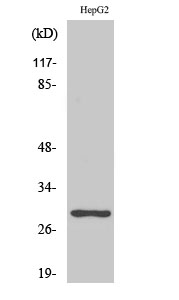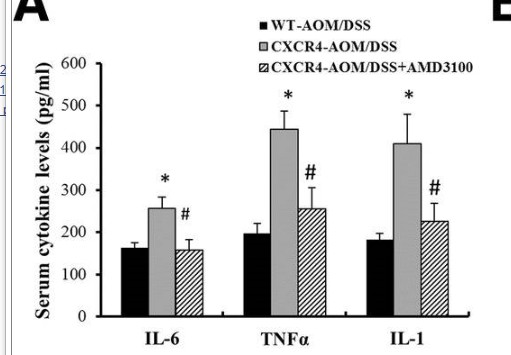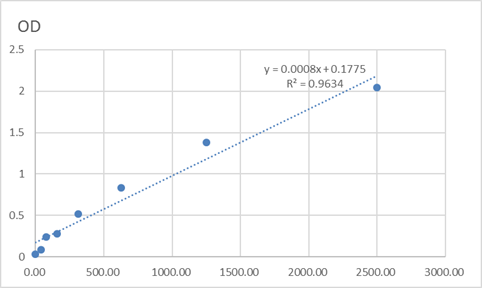
Catalog: KA3517C
Size
Price
Status
Qty.
96well
$330.00
In stock
0
Add to cart


Collected


Collect
Main Information
Reactivity
Human
Applications
ELISA
Conjugate/Modification
Unmodified
Detailed Information
Storage
2-8°C/6 months,Ship by ice bag
Modification
Unmodified
Detection Method
Colorimetric
Related Products
Antigen&Target Information
Gene Name:
PTTG1
show all
Other Name:
PTTG1 ;
EAP1 ;
PTTG ;
TUTR1 ;
Securin ;
Esp1-associated protein ;
Pituitary tumor-transforming gene 1 protein ;
Tumor-transforming protein 1 ;
hPTTG
EAP1 ;
PTTG ;
TUTR1 ;
Securin ;
Esp1-associated protein ;
Pituitary tumor-transforming gene 1 protein ;
Tumor-transforming protein 1 ;
hPTTG
show all
Background:
developmental stage:Low level during G1 and S phases. Peaks at M phase. During anaphase, it is degraded.,disease:Has strong transforming capabilities on a variety of cell lines including NIH 3T3 fibroblasts and on athymic nude mice. Overexpressed in many patients suffering from pituitary adenomas, primary epithelial neoplasias, and esophageal cancer. No mutation in the coding sequence has been observed. The transforming capability may be due to its interaction and regulation of TP53 pathway.,domain:The N-terminal destruction box (D-box) acts as a recognition signal for degradation via the ubiquitin-proteasome pathway.,function:Regulatory protein, which plays a central role in chromosome stability, in the p53/TP53 pathway, and DNA repair. Probably acts by blocking the action of key proteins. During the mitosis, it blocks Separase/ESPL1 function, preventing the proteolysis of the cohesin complex and the subsequent segregation of the chromosomes. At the onset of anaphase, it is ubiquitinated, conducting to its destruction and to the liberation of ESPL1. Its function is however not limited to a blocking activity, since it is required to activate ESPL1. Negatively regulates the transcriptional activity and related apoptosis activity of TP53. The negative regulation of TP53 may explain the strong transforming capability of the protein when it is overexpressed. May also play a role in DNA repair via its interaction with Ku, possibly by connecting DNA damage-response pathways with sister chromatid separation.,PTM:Phosphorylated at Ser-165 by CDC2 during mitosis.,PTM:Phosphorylated in vitro by ds-DNA kinase.,PTM:Ubiquitinated by the anaphase promoting complex (APC) at the onset of anaphase, conducting to its degradation.,similarity:Belongs to the securin family.,subunit:Interacts with RPS10 and DNAJA1 (By similarity). Interacts with the caspase-like ESPL1, and prevents its protease activity probably by covering its active site. Interacts with TP53 and blocks its activity probably by blocking its binding to DNA. Interacts with the Ku 70 kDa subunit of ds-DNA kinase. Interacts with PTTG1IP.,tissue specificity:Expressed at low level in most tissues, except in adult testis, where it is highly expressed.,tissue specificity:Expressed at low levels in the pituitary, liver, spleen, prostate, testis, ovary, small intestine and colon. Also expressed in various pituitary, testicular, liver and ovarian tumors.,
show all
Function:
M phase of mitotic cell cycle, mitotic cell cycle, M phase, nuclear division, DNA metabolic process, DNA repair,transcription, transcription, DNA-dependent, transcription from RNA polymerase II promoter, response to DNA damage stimulus, cell cycle, chromosome segregation, mitosis, gamete generation, spermatogenesis, sexual reproduction, cell cycle process, cell cycle phase, multicellular organism reproduction, RNA biosynthetic process, cellular response to stress, male gamete generation, organelle fission, reproductive process in a multicellular organism, chromosome organization, cell division,
show all
Cellular Localization:
Cytoplasm. Nucleus.
show all
Signaling Pathway
Reference Citation({{totalcount}})
Catalog: KA3517C
Size
Price
Status
Qty.
96well
$330.00
In stock
0
Add to cart


Collected


Collect
Recently Viewed Products
Clear allPRODUCTS
CUSTOMIZED
ABOUT US
Toggle night Mode
{{pinfoXq.title || ''}}
Catalog: {{pinfoXq.catalog || ''}}
Filter:
All
{{item.name}}
{{pinfo.title}}
-{{pinfo.catalog}}
Main Information
Target
{{pinfo.target}}
Reactivity
{{pinfo.react}}
Applications
{{pinfo.applicat}}
Conjugate/Modification
{{pinfo.coupling}}/{{pinfo.modific}}
MW (kDa)
{{pinfo.mwcalc}}
Host Species
{{pinfo.hostspec}}
Isotype
{{pinfo.isotype}}
Product {{index}}/{{pcount}}
Prev
Next
{{pvTitle}}
Scroll wheel zooms the picture
{{pvDescr}}



















